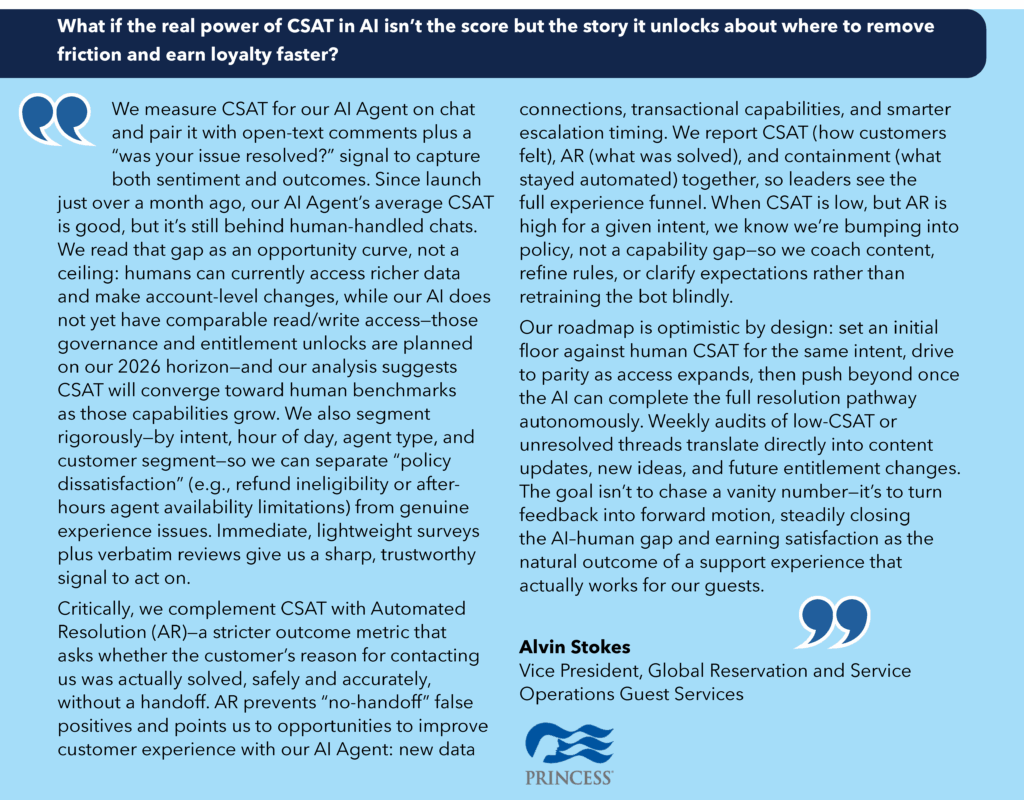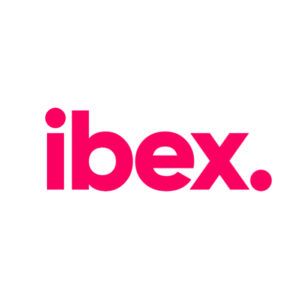Artificial intelligence (AI) isn’t just transforming customer experience; it’s becoming the experience. From virtual assistants and chatbots to predictive routing, AI now handles millions of frontline interactions once managed by humans. Yet one crucial question remains largely unanswered: Are customers actually satisfied with these AI experiences, and are companies even measuring it?
For years, customer satisfaction (CSAT) scores have served as a compass for service teams. But most measurement models still focus on human-assisted channels: calls, chats, or emails managed by agents. AI interactions often sit outside that framework — not out of neglect, but because traditional metrics haven’t kept pace with automation.
The challenge is clear: as AI becomes the voice of your brand, your satisfaction measurement must evolve, too.
Rethinking What “Good” Looks Like
Early AI success was defined by efficiency: shorter handle times, higher containment rates, and lower costs. Those remain valuable, but efficiency alone doesn’t equal satisfaction. A chatbot can resolve an issue quickly and still leave a customer feeling unheard or frustrated.
Today’s leaders are broadening their lens. Some are layering sentiment data and post-AI surveys into their analytics. Others use predictive tools like expected NPS (xNPS) or customer success scores to estimate satisfaction in real time. The goal isn’t more data; it’s better context.
Legacy metrics were built for a human-centric era. Measuring AI means expanding the definition of quality to include emotion, effort, and trust. You can’t optimize what you’re not measuring, and you can’t measure AI the same way you measure people.
Why It Matters More Than Ever
In 2023, customers were curious about AI. By 2025, they’re discerning. They know when they’re interacting with a bot, and they have expectations. The first impression your AI makes is the first impression your brand makes. When satisfaction isn’t tracked or understood, missteps can happen fast.
AI’s reputation depends on listening, learning, and iterating with the same rigor you apply to human teams. Our 2025 CX Leaders Trends & Insights: Consumer Edition report, created in partnership with Transcom, revealed that while 78% of consumers now use self-help tools, these rank lowest in satisfaction across all channels, a widening “Experience Gap” between what customers expect and what they receive.
Bridging the Gap
Measuring AI satisfaction isn’t just a tech initiative; it’s a leadership one. It demands collaboration across CX, operations, and technology teams to define success, build new metrics, and ensure back-office systems support the experience AI promises upfront.
Because at the end of the day, customer satisfaction isn’t about checking a box. It’s about proving you care. And that applies whether the “agent” is human or machine.
Want to explore how leading brands are redefining measurement for the AI era? Read the full article Are You Measuring CSAT for AI? in the latest issue of CX Insight magazine.
































 TELUS Digital
TELUS Digital ibex delivers innovative BPO, smart digital marketing, online acquisition technology, and end-to-end customer engagement solutions to help companies acquire, engage and retain customers. ibex leverages its diverse global team and industry-leading technology, including its AI-powered ibex Wave iX solutions suite, to drive superior CX for top brands across retail, e-commerce, healthcare, fintech, utilities and logistics.
ibex delivers innovative BPO, smart digital marketing, online acquisition technology, and end-to-end customer engagement solutions to help companies acquire, engage and retain customers. ibex leverages its diverse global team and industry-leading technology, including its AI-powered ibex Wave iX solutions suite, to drive superior CX for top brands across retail, e-commerce, healthcare, fintech, utilities and logistics.






















 Trista Miller
Trista Miller





























